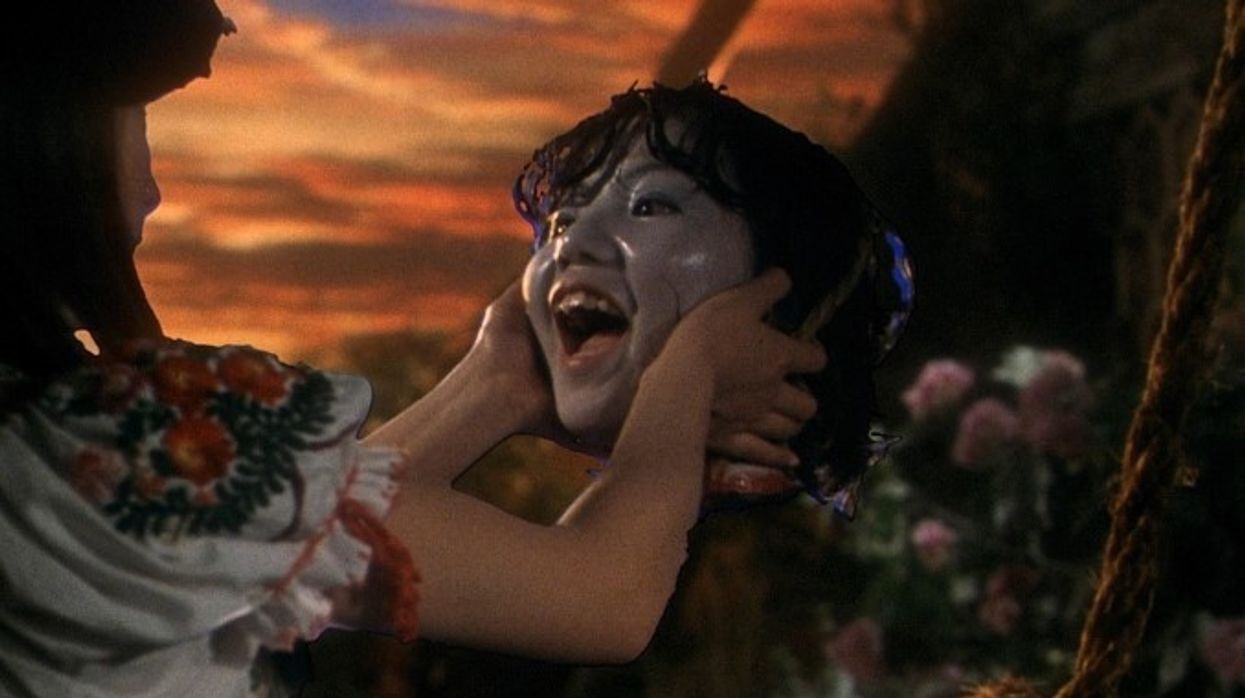'Hausu' Is the Elevated Version of 'Jaws'—Let Us Explain
Nobuhiko Obayashi’s answer to Spielberg’s Jaws is a revolutionary piece of cinema that you must watch.

After Steven Spielberg’s Jaws became the highest-grossing film of all time in 1975, becoming the movie that marked a turning point in cinematic history, the film company Toho approached director Nobuhik Obayashi with the suggestion to make a film like Jaws.
The result was Hausu(or House), a film heavily influenced by ideas from Obayashi’s daughter. It was a bizarre fever dream that turned Bruce the Shark into a mischievous cat and dealt with the horrors of aging. The film was an instant hit with the youth culture of Japan but was never officially screened in the United States until the distribution rights were bought by Janus Films in the late 2000s.
Hausuand Jaws do have a lot of similarities, but they are vastly different when it comes to their visual and narrative language. Hausu has surrealist visual language and genre-blending commentary on fears that everyone can relate to. Hausuis a remarkable movie that can teach filmmakers how to elevate their inspirations.
The Surrealist Visual Style
From the first few moments of the film, it’s obvious that Hausuis not a typical horror film. Its frivolous approach to horror is emphasized by the quick edits and dream-like sequences that are bathed in colored filters. The reality is loose, feeling more like a collection of moments from a child’s perspective of adulthood.
Even when the horrors begin, slowly isolating each character, the surrealism only amplifies. From child-eating pianos to a blood-vomiting portrait of a cat, the events force the audience into the perspective of the fearful children who are unable to escape.
While Jaws captures us in suspense with its menacing first-person perspective of the shark and its fin that slices through the water towards the impending doom of a swimmer, Hausurefuses to build tension and chooses to shock the audience with absurdity.
Obayashi wanted to have the film’s special effects look fake, as if they were made by children, and supervised them himself rather than utilize Toho’s effects director. The visuals were uneven, making the film look more inconsistent. It is experimental by design, allowing the viewer’s mind to get lost in the wonder of the visuals.

The Feminine Horrors vs. Masculine Reaffirmation
Even if you are not able to follow the story’s loose logic, Hausuis a bright, colorful, happy-go-lucky ghost story about innocent children devoured by a spirit.
Chigumi Obayashi, the 10-year-old daughter of the director, gave him a collection of images, incidents, and phobias from her own life: the thought that her reflection might attack her as she combed her hair, the idea that a watermelon chilled in a well might be a severed head, and the oddities of her grandparents’ house in the country. To motivate these ideas, the director created a backstory for the aunt (Yōko Minamida) who lives in the country house. She was left pining for a lover who never returned from World War II, and her ghost haunts the house.
The aunt's spirit separates each girl and finds one to possess, promising another chance at youth and beauty and more time to wait for love. Grief and denial fuel the story, turning the main character Gorgeous (Kimiko Ikegami) into an antagonistic murderer who aids in the death of her friends.
The notion of love conquering all is manipulated into justifying murder and possession. It's a quiet part of the story’s narrative, yet it justifies the choices made and the casual cruelty of the aunt becomes more sadistic with each girl’s death.
Like Hausu, Jaws deals with similar themes of human greed and man vs. nature, but by reaffirming that masculinity can overcome almost everything. Jaws is fueled by masculine adrenaline, restating the message that the toughness of men will prove victorious over their foes.
The feminine lens of Hausuis weaponized to break the soft and simple feminine mold women are cast into and complicate the wants and desires of a woman in grief.

Blending Over-the-Top Horror and Comedy
Although Toho wanted Obayashi to create a groundbreaking horror film that would revive the dying studio system in Japan, Obayashi delivered a fantasy.
Horror and comedy have been closely tied throughout the history of film, and for good reason. The contrasting elements of both genres work to create an intense emotional reaction from the audience. Comedy gives permission to laugh at your fears, promising reassurance through the film’s darkest moments.
Unlike Jaws, which relies on tension, Hausu relies on your participation. While both films show you something moving in the background or reveal information to the audience that the characters do not know, Hausu immediately rewards the audience with outlandish scares. Common, everyday items became instruments of death and torture. The piano that once brought the girls a moment of happiness at the beginning of the movie is now eating one of them. A bath is now a bottomless pit. Bananas will be your death.
It’s absurd, but in a way that makes sense when you let go of the realism that we are used to.
Horror and comedy allow filmmakers that space to break away from realism. The rules of the genre are not solidified. Instead, they welcome change and bizarre ideas. Horror-comedy is a genre that will never stop evolving, which is why it has been around since its birth of the genre in 1922.

If Jaws had never made the history-altering splash it made, then we would have never been able to experience its kooky and cooler cousin, Hausu. Both films are great—that isn’t even a question. Yet Hausu is more ridiculous than the summer break at Amity Island. It’s an isolated horror that won’t let you escape its unhinged antics and its desire for never-ending youth.
You can watch Nobuhiko Obayashi’s Hausu(1977) on HBO Max now.
Do you think Hausuis better than Jaws? Let us know why or why not in the comments below!













